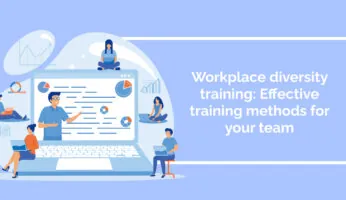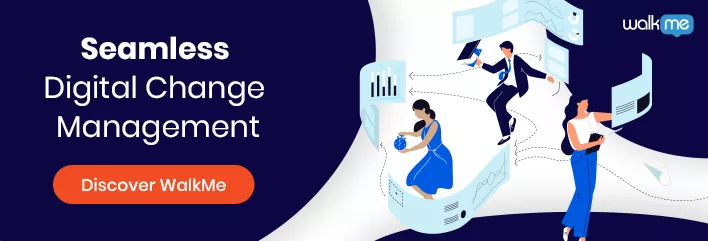
To stay effective and productive today’s fast-paced economy, organizations need employees who can adapt to change.
Disruptive change, after all, has become very common in today’s economy. From digital innovation to financial crises to the COVID-19 pandemic, we are witnessing an unprecedented level of disruption across industries – and employees who want to stay relevant will need to learn to adapt.
Below will look at a few ways to help employees adapt to business and workplace changes.
6 Ways to Help Employees Adapt to Change in the Workplace
Here are several ways businesses can help their employees stay resilient in the face of disruption and change.
1. Upskill
One of the most common causes of change is digital innovation.
New tools are continually being adopted by businesses, which means that employees must continually learn new workflows.
On the one hand, these tools can introduce new capabilities into the organization and increase organizational performance.
At the same time, however, they also increase digital complexity.
This has created a digital skills gap: many organizations lack the talent they need to stay productive and innovative.
To overcome this skills gap and help employees adapt to the changing workplace, it is important to continually train workers.
Upskilling and digital adoption programs should therefore become a permanent part of every organization.
2. Change management communication
Change management is the business discipline dedicated to overseeing organizational change programs.
Effective change management communication strategies can reduce employee resistance, improve motivation, and enhance the outcomes of change projects.
Here are a few principles to keep in mind when designing a communication strategy:
- Be transparent about what change is occurring and why
- Proactively solicit feedback and listen to employees
- Explain the benefits of the change
- Provide support, such as career development and training
Another point to keep in mind about organizational change is that change affects the team environment and the culture.
To mitigate potential feelings of alienation, it is important to invite participation from employees in order to make them feel like a part of the change.
3. Improve the employee experience with technology
Used correctly, technology can streamline change in the workplace.
Tools such as training tools and communication tools, for instance, can improve the employee experience and help employees adapt.
Digital adoption platforms, for instance, can be used for:
- Employee training
- Workforce communication
- Automation
- Task and process mining
- Employee monitoring
Used effectively, technology can not only facilitate change, it can actually generate major performance advantages. If it is used improperly, however, it can become a barrier to change, so it is important to develop a strategic approach to digital adoption.
4. Adopt agile workflows
Agile should be embedded into workflows and the mindsets of employees.
This set of values focuses on:
- Customer-centrism
- Staying responsive
- Continual collaboration with stakeholders
- Functional products and services over documentation
With an agile mindset, employees will react more positively to change and they will be more willing to support changes.
5. Cultivate a pro-learning mindset
Another value to instill in the workplace is a pro-learning mindset.
When change is continual, employees must also continually learn, as mentioned above.
Employees who embrace the learning will naturally be more supportive of change than those who do not.
They will also be more productive, more resilient, and more innovative.
6. Replace reaction with innovation
Agility focuses on reaction and responsiveness. Staying agile in the face of disruption is absolutely essential in uncertain economic or business conditions.
However, agile focuses on “following” rather than on “leading.”
Innovation, on the other hand, focuses on leading and developing new solutions.
Pairing agility with innovation can enable an organization not only to respond to change, but to develop new and innovative solutions in the face of disruption.
To illustrate this with an example, let’s look at COVID-19:
Companies around the world were required to adopt remote working practices. Agile firms that were able to quickly adopt remote working practices were more successful.
On the other hand, some companies actually innovated during this difficult time.
Here are a few examples of companies that developed innovative products and services to meet the demands of the COVID-19 economy:
- A mobile hotel in the form of a van
- A scanner that evaluates how well you washed your hands
- Self-driving vehicles that deliver goods and services
- Robots that take over potentially risky job duties, such as street cleaning
In short, disruptions can result in drastic changes to the business landscape – so drastic, in fact, that old business models become unfeasible.
To help employees stay innovative and adaptable, invest in innovation. Build innovation hubs and dedicate research time and hours to innovation. Support ideas that are outside the box. And make innovation a part of the culture.
Key Takeaways
Adaptability is a critical skill in today’s business environment.
While many organizations focus on agility at the level of the organization, it is equally important to foster adaptability at the level of the employee.
The list above includes just a few ways to cultivate adaptability among employees.For more ideas, see our articles on adaptability and organizational agility.
WalkMe Team
WalkMe spearheaded the Digital Adoption Platform (DAP) for associations to use the maximum capacity of their advanced resources. Utilizing man-made consciousness, AI, and context-oriented direction, WalkMe adds a powerful UI layer to raise the computerized proficiency, everything being equal.



